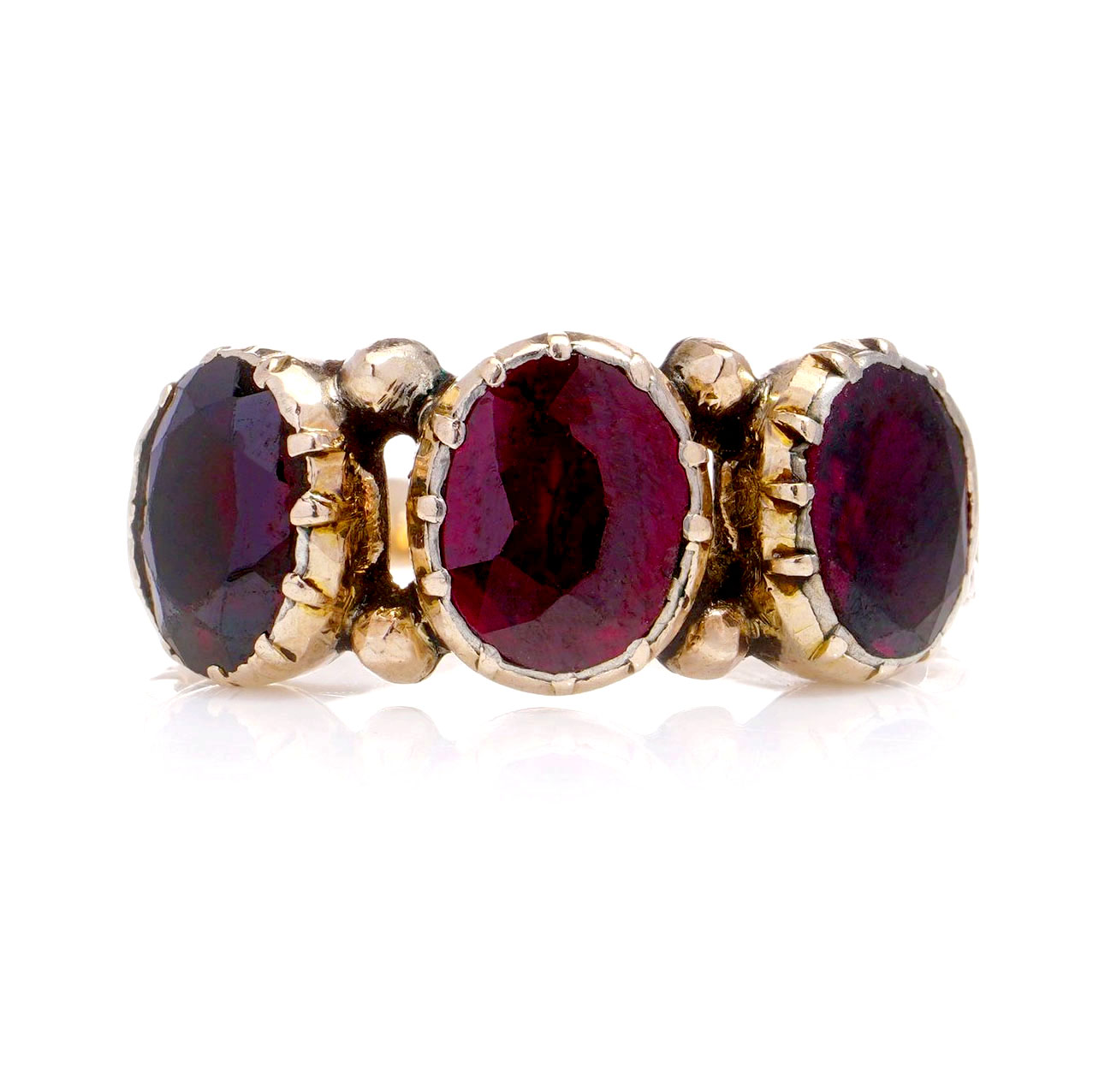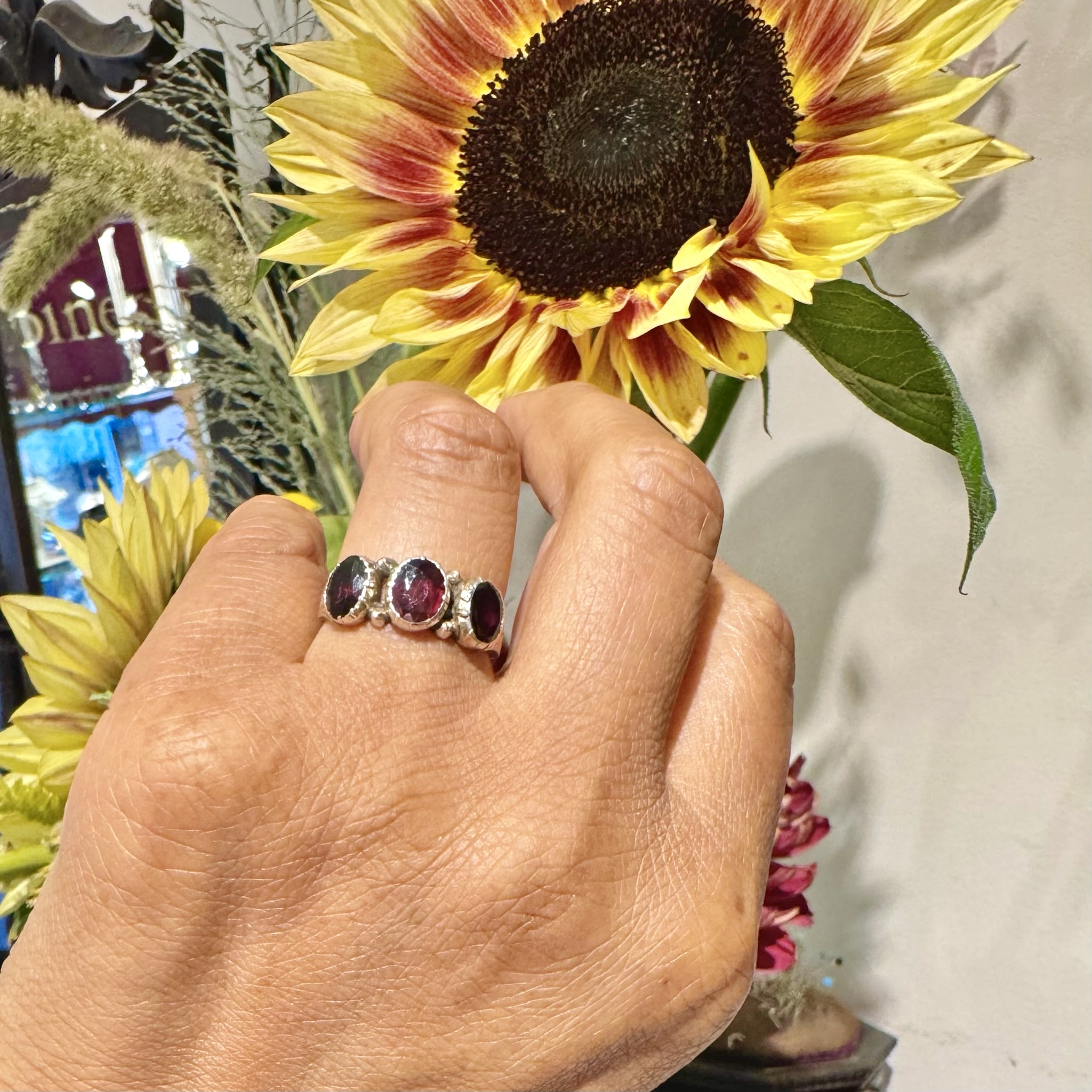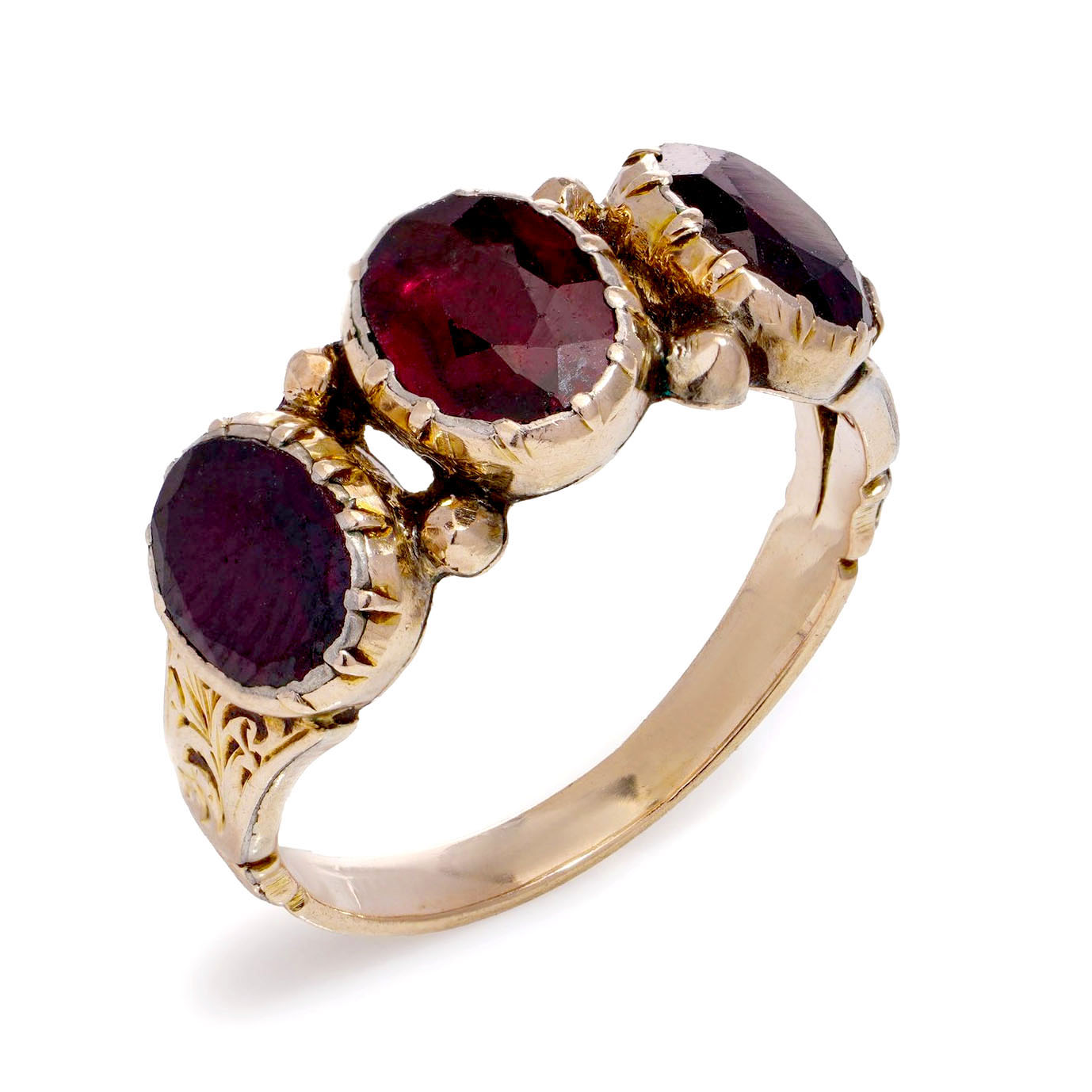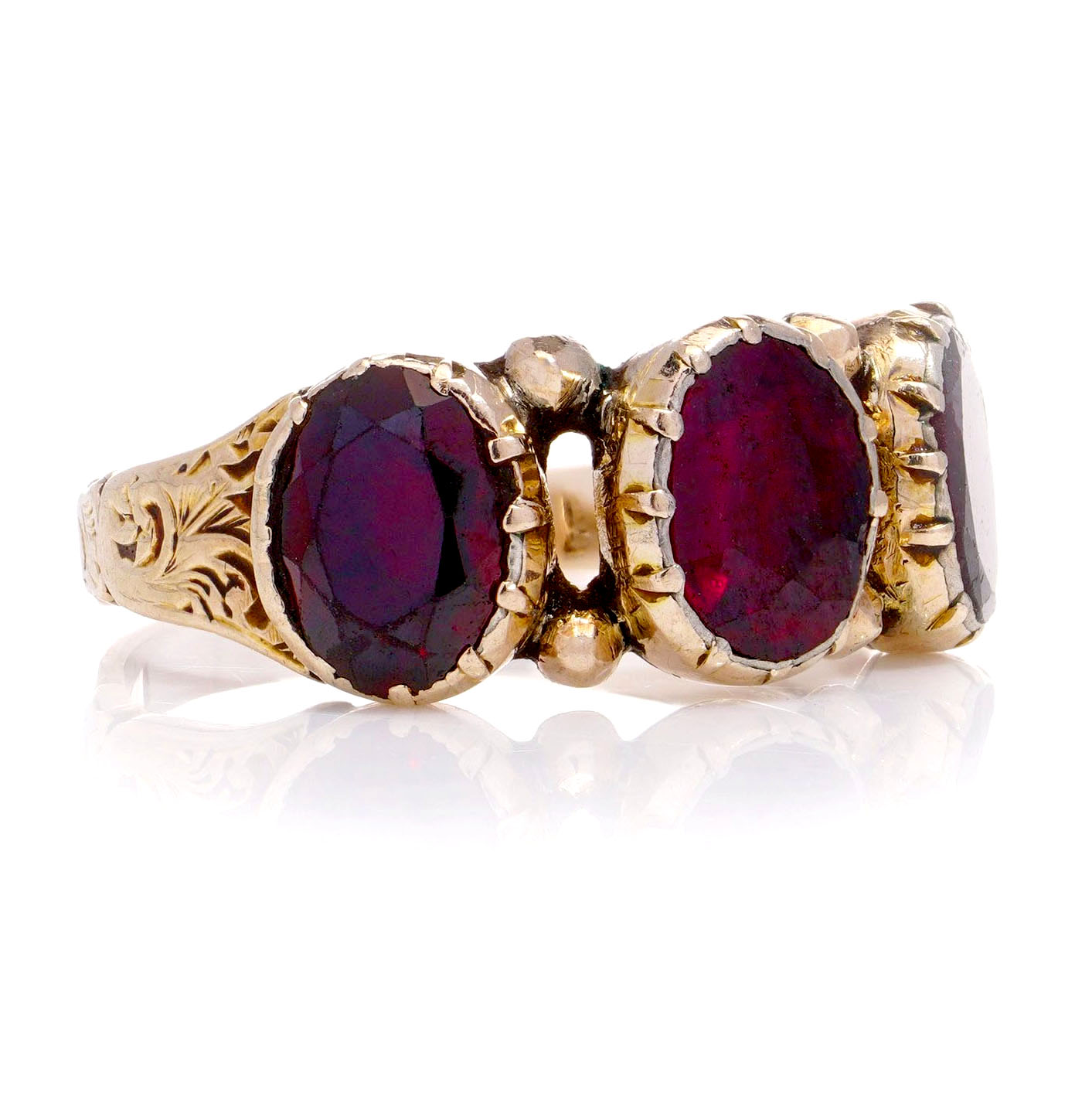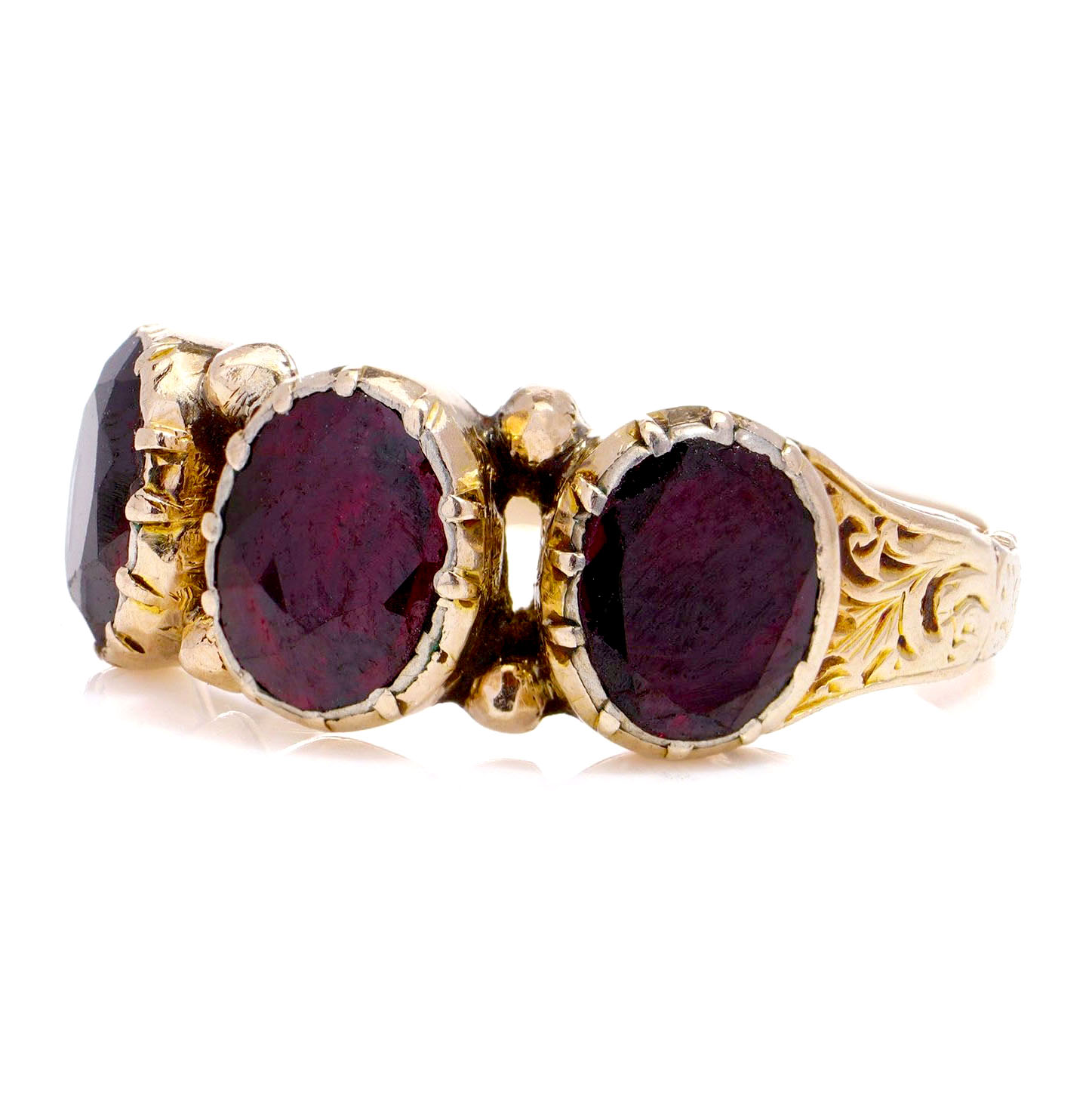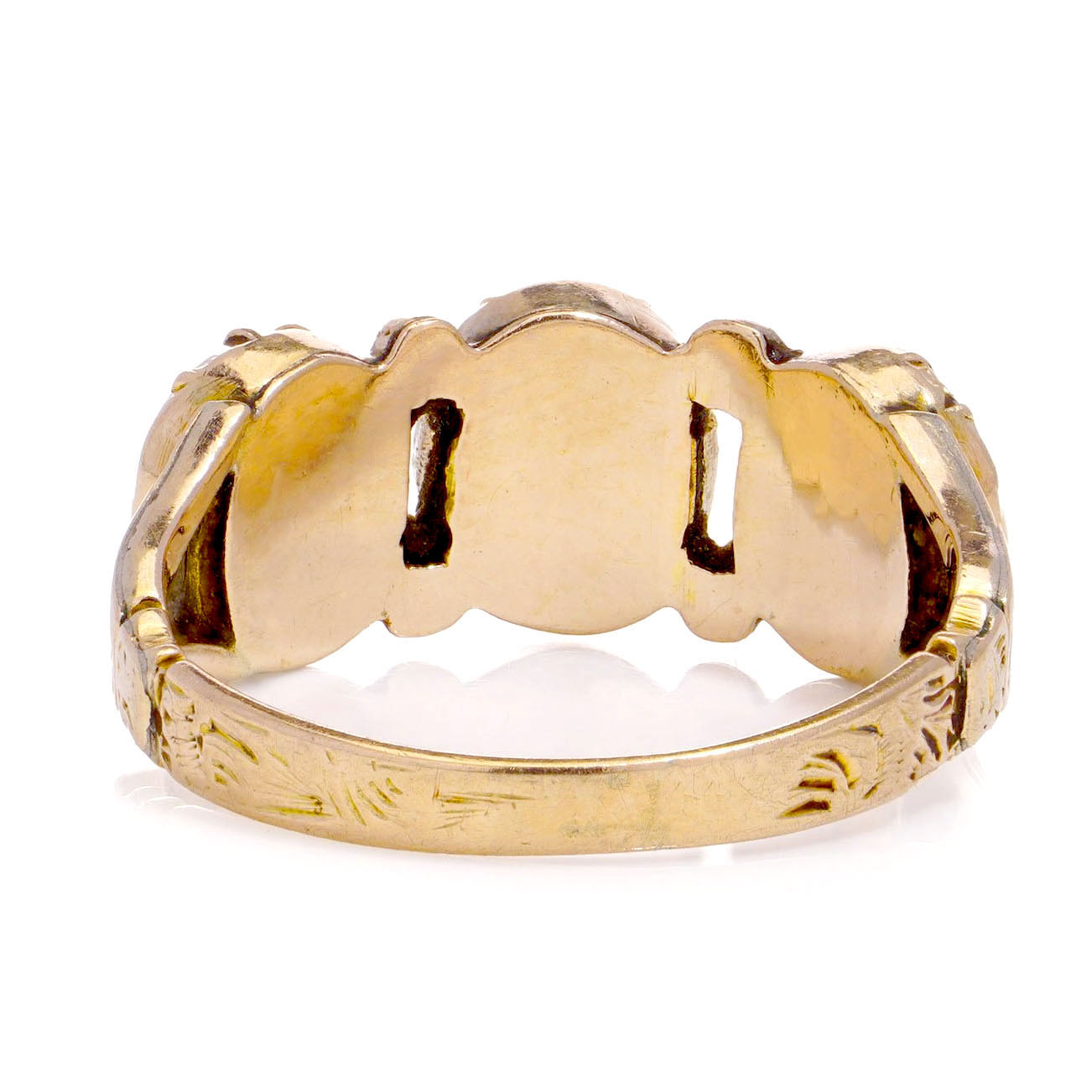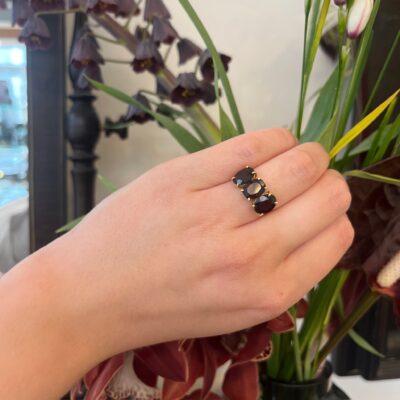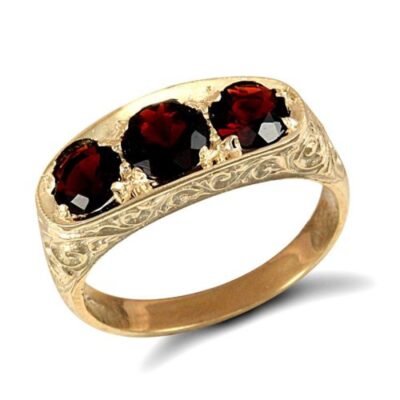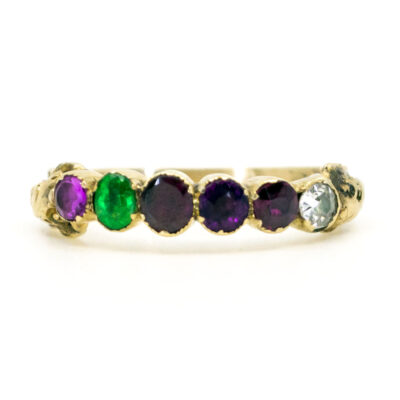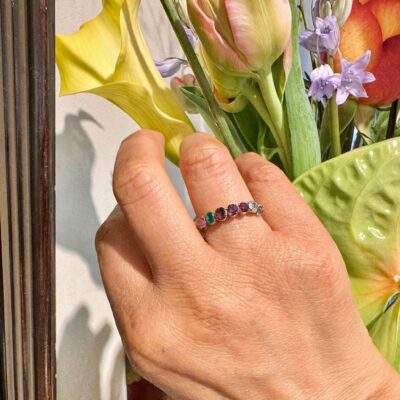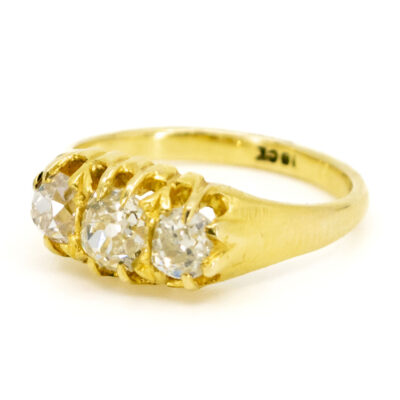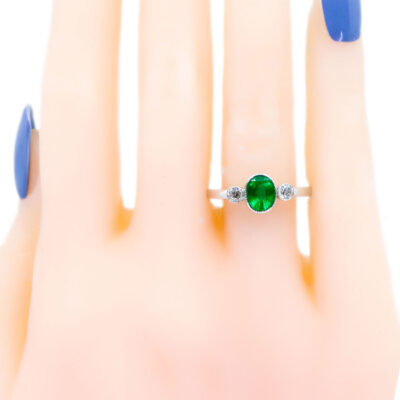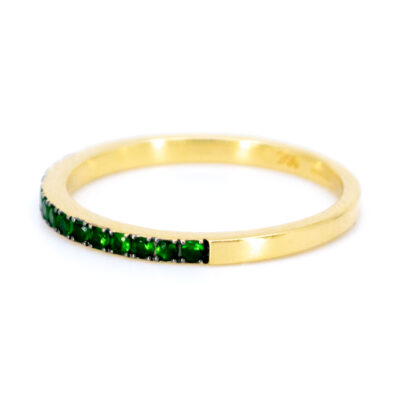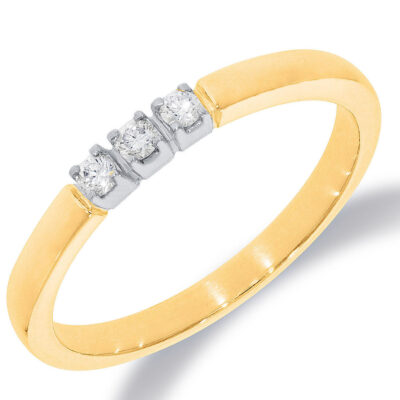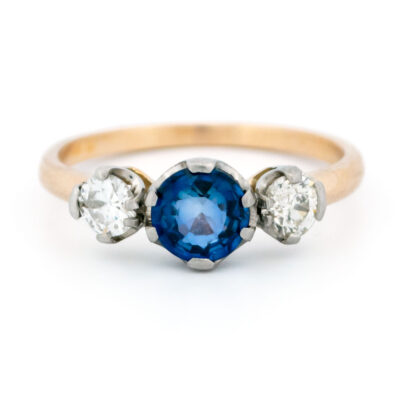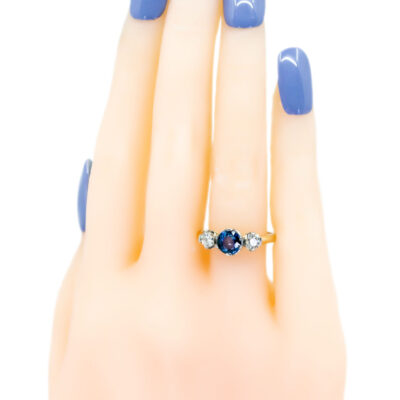Step into the past with this Georgian-inspired 9k gold ring. The trio of almandine garnets, with their deep red hue, creates a stunning focal point. Paired with the vintage gold setting, this ring is a beautiful homage to the artistry and romance of the 18th century. ❤️
Videos
Details: Garnet, 9k Ring.
Size: 16.31 NL / 51.2 FR / 5¾ US / L UK, sizeable (Within reason. Contact seller for information).
Weight in grams: 2,8.
Condition: Very good condition – slightly used with small signs of wear.
Shipping and Pickup: This charming piece ships from our store located in the center of Amsterdam, The Netherlands. We offer both registered shipping and local pickup at our store. In the case of local pickup, any applicable shipping costs will be refunded.
About Us: Add some sparkle to your style with Binenbaum.com. We offer a stunning selection of antique and vintage jewelry that you won’t find anywhere else. From timeless rings and dazzling necklaces to unique brooches, we have something for every taste and occasion. Visit our website today and treat yourself to a piece of history.
| Design Era | |
|---|---|
| Design & Historical Context | Georgian jewelry, which was produced from 1714 to 1837, is fairly rare and is highly sought after by collectors of estate jewelry. This is because much of it has been dismantled over the years. The Georgian era was a time of great cultural and artistic flourishing in Britain, and this was reflected in the jewelry of the time. Georgian jewelry is characterized by its intricate detailing and use of precious materials such as gold and diamonds. It was also influenced by the Baroque, Rococo, and Neoclassical styles. The Georgian era covers the period from 1714 to 1830, and includes the reigns of four British kings named George: George I, George II, George III, and George IV. The definition of the Georgian era is often extended to include the short reign of William IV, which ended with his death in 1837. The Georgian era was followed by the Victorian era, which was named after Queen Victoria and spanned from 1837 to 1901. |
| Materials & Craftsmanship | Garnet: The Stone of Passion and Protection Garnet, renowned for its deep red hue, is a gemstone that symbolizes passion, energy, and protection. Though commonly associated with its rich red color, garnet actually comes in a variety of shades, including green, orange, and even rare blue, making it a versatile and intriguing gemstone. Garnet has a long history of use, dating back to ancient Egypt, where it was worn by pharaohs as a symbol of life and power. In Roman times, garnets were often set into signet rings used to stamp wax seals on important documents. The stone was also believed to offer protection to travelers and warriors, warding off harm and ensuring safe journeys. In jewelry, garnet’s durability, with a Mohs hardness of 6.5 to 7.5, and its striking color make it a popular choice for rings, necklaces, and earrings. Its ability to capture and reflect light with a warm, fiery glow adds a touch of drama and sophistication to any piece. Garnet is more than just a gemstone; it is a symbol of enduring passion and strength. Its vibrant energy and historical significance make it a timeless and powerful choice for jewelry that stands out and tells a story. 9k: The Affordable and Durable Choice with a Subtle Golden Hue 9k gold is a cost-effective and sturdy option in the world of fine jewelry, particularly popular for those seeking the look of gold at a more accessible price point. The 9k indicates that the gold is composed of 37.5% pure gold, with the remaining 62.5% made up of alloyed metals such as copper, silver, nickel, or zinc. This higher proportion of alloyed metals results in a more durable and harder material, making 9k gold an excellent choice for everyday wear. Historically, 9k gold has been favored in regions like the United Kingdom and Australia, where it is legally recognized as gold. It offers a balance between the luxury of gold and the practicality of more affordable metals, making it accessible to a wider range of people. In modern jewelry, 9k gold is appreciated for its durability and subtle color. While its gold content is lower than that of 14k or 18k gold, it still retains a warm, golden hue, though it is slightly paler. The color of 9k gold can vary depending on the metals used in the alloy: Yellow Gold: 9k yellow gold has a softer, more subdued golden color compared to higher karat golds, but it still carries the classic warmth and appeal of gold. White Gold: 9k white gold has a faint golden tint beneath its white finish, which is often enhanced with a rhodium plating to give it a brighter, more silvery appearance. Rose Gold: 9k rose gold, made by adding more copper to the alloy, has a delicate pinkish hue that is slightly more muted than higher karat rose golds but still carries a romantic charm. 9k gold is commonly used in rings, earrings, bracelets, pendants, and other jewelry that is designed for daily wear. Its increased durability means it is less prone to scratching and bending, making it a practical choice for pieces that are worn regularly. 9k gold is more than just an affordable alternative; it is a symbol of practical luxury and everyday elegance. Its durability, combined with its subtle and warm color, makes 9k gold a popular choice for those who want the beauty of gold with the added benefit of strength and affordability. Whether in a simple design or an intricate piece, 9k gold offers a lasting and attractive option for jewelry that can be cherished daily. |
| Size | |
| Gender | |
| Weight (in grams) | 2,8 |
| Condition | Very good condition – slightly used with small signs of wear |
By following these tips, you can enjoy your precious jewelry for many years to come.
Related Products
-
Garnet 18k Trilogy Ring 17477-9204
€ 1.895,00 VAT incl. (where applicable) -
Garnet 9k Trilogy Ring 16031-8713
€ 1.295,00 VAT incl. (where applicable) -
Amethyst Diamond Emerald Garnet Ruby Regard (Multi Gemstone) 10k Regard Ring 10806-6711
€ 1.895,00 VAT incl. (where applicable) -
Diamond 18k Trilogy Ring 10590-6657
€ 3.395,00 VAT incl. (where applicable) -
Emerald Diamond 14k Trilogy Ring 13709-8213
€ 2.995,00 VAT incl. (where applicable) -
Garnet 18k Half Eternity Ring 10000-8804
€ 995,00 VAT incl. (where applicable) -
Diamond 14k Trilogy Ring 17036-9083
€ 895,00 VAT incl. (where applicable) -
Diamond Sapphire 14k Platinum Trilogy Ring 14408-5114
€ 3.295,00 VAT incl. (where applicable)
- Home
- Collection
- Fine Jewelry
- Silver Jewelry
- Silverware
- Boxes
- Candlesticks
- Salt and pepper shakers
- Miniatures
- Salt cellars
- Spoon Set
- Condiments
- Frames
- Napkin Ring
- Spoon
- Oddities
- Cups
- Vases
- Cutlery
- Serving Spoon And Cake Server
- Candlesticks
- Baskets
- Hanukkiah
- Spice Tower
- Yad
- Tea Set
- Sugar Castor
- Napkin Rings
- Wine Bottle Coaster
- Wine Stopper
- Tea Pot
- Jugs
- Rattles
- Hip Flask
- Miscellaneous
- Rings 💍
- About
- Contact
